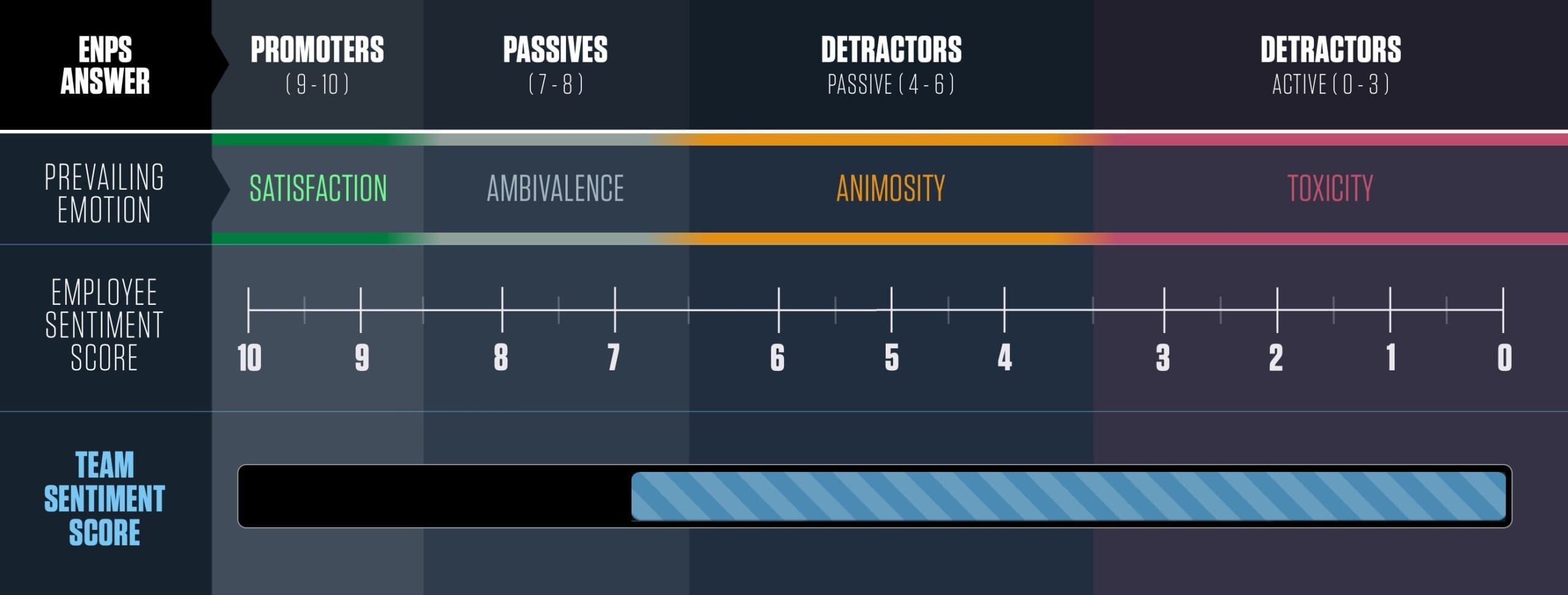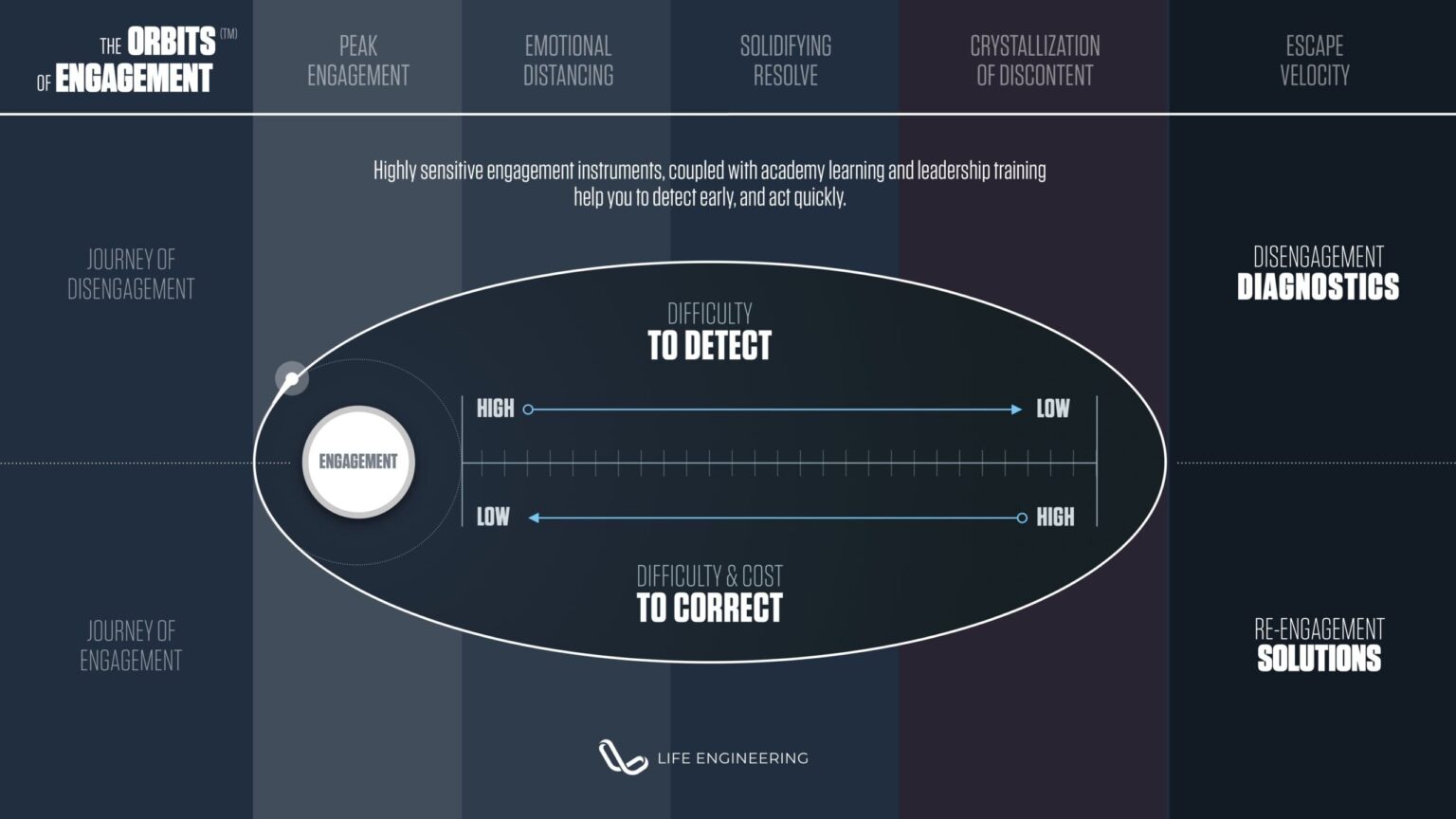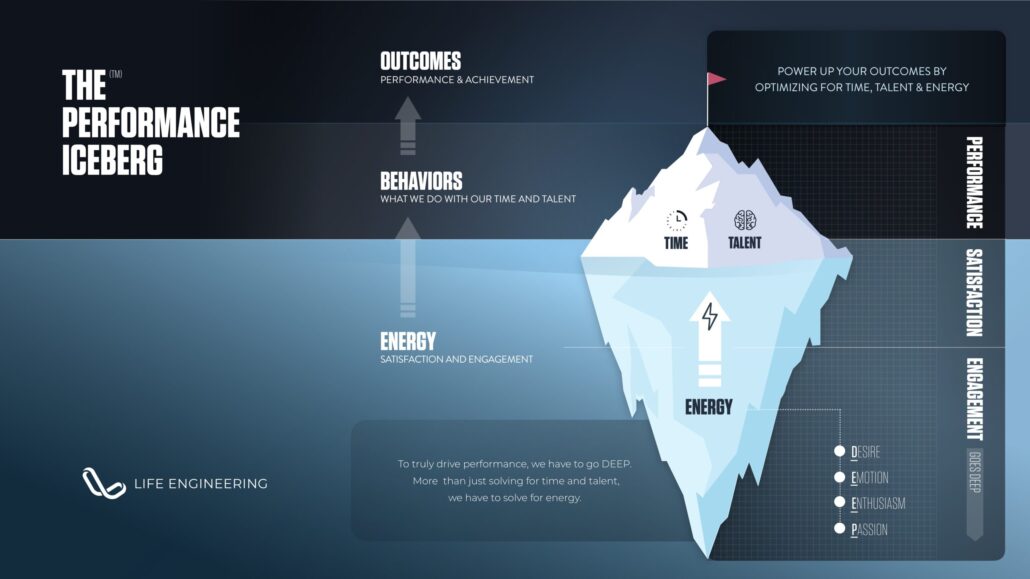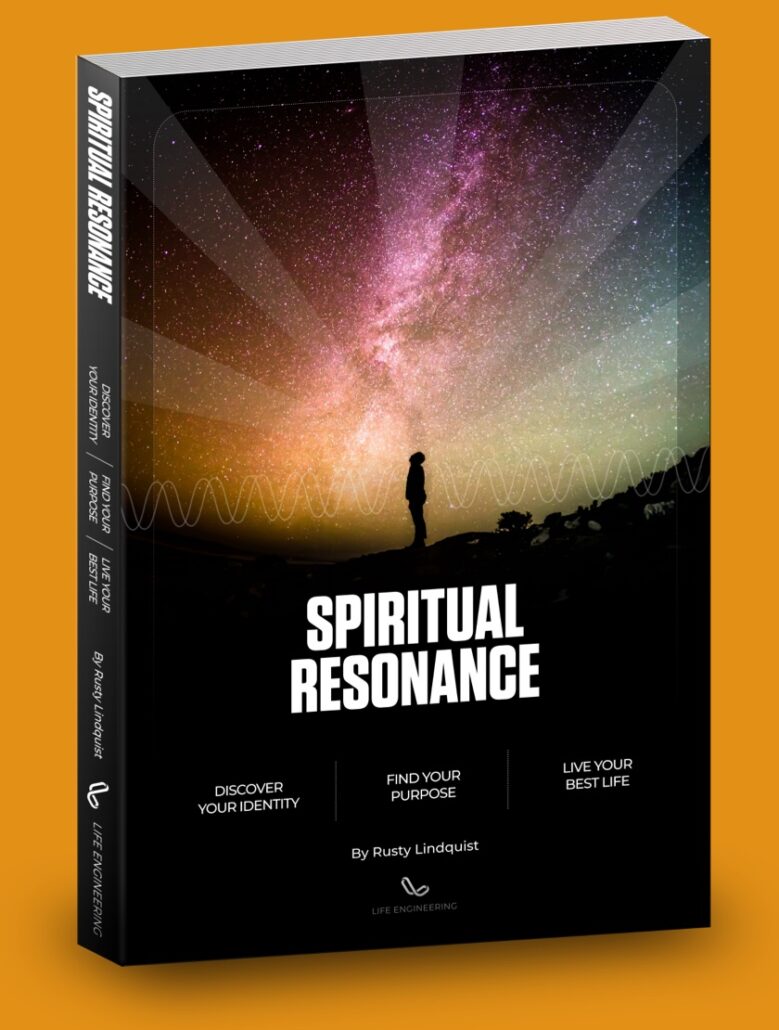ESS, an overview
The ESS (or Employee Sentiment Score) is an all-new proprietary approach to measuring employee sentiment, which goes beyond just employee satisfaction (usually measured by ENPS).
The Employee Sentiment Score goes deeper into tracking and understanding the psychology behind each of the various emotional “orbits” an employee can experience, more tightly linking sentiment to engagement.
how ess compares to enps

For many years, ENPS has been an industry standard approach for measuring employee satisfaction. Yet it has many shortcomings. ESS (Employee Sentiment Score) is an all-new approach to understanding employee sentiment, not just satisfaction.
It uses the same data gathered from ENPS, but processes it differently to create additional value and insights. Used together, you can get a more complete sense of employee satisfaction and sentiment inside your team or organization.
Insights on small data sets
One of the shortcomings of ENPS is that it tends to need a lot of respondents in order to be really accurate. With ESS you only need a handful of respondents in order to reach a high level of accuracy.
That means that while ENPS can give you a reasonable idea of employee satisfaction across large teams or an entire organization, you’ll want to use ESS for accuracy and insight with smaller groups and teams (under 20).
The ultimate lightweight alternative to engagement
The appeal of ENPS generally is in the ability for it to be a lightweight alternative to a full engagement survey.
Combined with ESS, you survey on a more frequent basis (like monthly or every other month) to keep your finger on the pulse of employee satisfaction, without imposing the survey fatigue that comes with too-frequent in-depth engagement surveys.
This allows you to use it as a way of identifying small groups who may be struggling, and let that insight trigger more targeted and tailored engagement research for those teams.
With the ESS add-on to ENPS, you now have more accurate small-team data, making it the perfect lightweight solution for identifying areas of the org that may need immediate focus, without subjecting the whole org to an in-depth engagement study.
More Responsive
This ability to have more accurate insights on small data sets, used more frequently, allows you to more quickly identify pockets of discontent inside your organization.
This allows you the ability to more rapidly respond to that discontent, before it can fester and turn into a much larger and more costly problem to solve for.
For more information on the correlation between cost-to-fix and level of dissatisfaction, as well as the research into how discontent can spread, click here or on the image below.
More Insightful
ENPS uses “willingness to recommend” as the ultimate indication of satisfaction, which the research shows that it is.
But this singular focus on “willingness to recommend” causes it to look over an entire landscape of sentiment that can be equally valuable to an organization, or perhaps even more valuable.
When the entire landscape of sentiment is understood, the organization can better optimize for the outcomes is desires to obtain. ESS arms you with those deeper emotional insights otherwise overlooked by ENPS.
ess measures sentiment
ESS (Employee Sentiment Score) provides insight into the emotional undercurrent inside your organization… what forms the backbone of your organization or team culture.
Click here or on the image to read more about employee sentiment and how it relates to employee performance, employee engagement, and core organizational metrics like employee turnover, employer brand, employee absenteeism.
You’ll find out how employee satisfaction correlates to customer satisfaction and other organizational outcomes.
ess and "prevailing emotion"
The Employee Sentiment Score works off the same data gathered from ENPS, where employees are asked a single question: “On a scale of 1 to 10, how likely are you to recommend our company as a place to work?”
But whereas ENPS is only looking for “willingness to recommend” as an ultimate, end-all indicator of employee satisfaction, ESS seeks to better deconstruct the emotional stages of employees who rate along that scale.
In ESS, your passives are not discounted, and the 10-point scale is broken down into 4 total categories.
The first two categories (promoters and passives) are the same as ENPS, but your Detractors are divided into two separate sub-categories.
This is important, because when looking to truly understand the entire landscape of employee sentiment, it’s clear that there is a profound difference between how someone feels about your organization if they rate you a 6, than if they rate you a 0.
ENPS treats these as the same. ESS knows they’re different.

the 4 prevailing emotions of ess
rating (9 - 10)
promoters
prevailing emotion:
satisfaction
Similar to ENPS, ESS sees that your promoters are your most loyal advocates, in that they are willing to actually advocate for you (willing to recommend you). They are not only loyal, but are vocal in their loyalty.
These employees are feeling the highest degree of satisfaction. It’s important to understand just how valuable these individuals are.
Vocal loyalty (or willingness to recommend), means that they have incorporated the organization (where they work) into their identity, and are willing to invest in the organization by telling others about it.
Note that it doesn’t mean that they see things as being perfect. And getting a 9-10 from someone doesn’t mean there is nothing more to do, nor does it mean they’ll remain there for long.
You should also note that having a 9-10 in satisfaction also doesn’t indicate they are at a 9-10 in engagement. It is possible to be temporarily satisfied at work, but not engaged in the work you do. See the principle Employee Satisfaction for important insight on this.
rating (7 - 8)
PASSIVES
prevailing emotion:
ambivalence
At first glance, you’d think that an “8” rating would be high, and should qualify that person as a “Promoter.” But the research shows that those who rate you at a 7-8 are more likely to stay quiet when given the opportunity to “promote,” or advocate and recommend.
These individuals are happy enough to stay where they are, but they are actually feeling a degree of emotional ambivalence, causing them to be “promotional” fence-sitters neither feeling strongly enough to recommend you, nor strongly enough to speak poorly about you.
There’s interesting psychology behind this, in that when we “promote” or recommend something, we are formally endorsing that thing, and by doing so, making it part of our identity, and our recommendation becomes a type of social investment for us.
We’re reluctant to do this for fear that those to whom we’re recommending don’t have the same experience we do, and therefore think differently of us or judge us because of that.
These two aspects of Identity and Investment are two of the Elements of Engagement we cover in our Academy Curriculum, and measure for in the Engagement Assessment.
For this reason, to get someone to “promote” or recommend your organization, you need to have earned from them the highest level of trust and satisfaction.
rating (4 - 6)
PASSIVE DETRACTORS
prevailing emotion:
ANIMOSITY
Your Passive Detractors are those who have graduated from ambivalence (where they don’t feel strongly enough to advocate one way or another) to animosity, where they have begun to feel (increasingly) strong negative emotions.
They’ve now become “detractors” in sentiment, but are more “passive” in how they manifest that sentiment.
Yes, they’ve started to experience growing animosity toward the organization (or aspects of the organization) that they are highly dissatisfied with, but they don’t show it in highly pronounced ways.
But they do show it. Inherent to the definition of animosity is the propensity for those strong feelings to start to show up in actions.
This is where you’ll start to see the first behavioral signals of dissatisfaction.
These behavioral signals are subtle at first (in your 5’s and 6’s), but will become more overt and adversarial as those people become 4’s, and then (if unsolved for), continue to degrade into the next category… Active Detractors.
rating (0 - 3)
ACTIVE DETRACTORS
prevailing emotion:
TOXICITY
Your Active Detractors are those for whom their animosity (feelings of dislike that tend to display themselves in action) have peaked, and they have become openly and actively toxic to the organization.
The difference here is in how openly, overtly, and actively these individuals advocate against the organization (or the aspects of the organization they dislike).
Whereas with Passive Animosity, you have growing distaste and dissatisfaction, yet mean the organization no harm, Active Detractors are often seeking some form of retribution.
By this point, they’ve galvanized their resolve to leave, and often act in open rebellion against the organization.
These individuals are the ones that can cause the most cultural harm, because they are not only dissatisfied, but they are determined to take that perspective of dissatisfaction and recruit others to that position.
They also represent not only culture risk, but can often become what’s known as an “insider threat.”
CALCULATING YOUR ESS
Based on this emotional understanding on a per-employee level, your ESS score is generated as the “Average Employee Sentiment” captured in your ENPS survey question.
That average score (taken on a scale of 0-100) is then mapped across the 4 ESS categories to show you what the average sentiment is for this team being measured.

Note that this doesn’t necessarily reflect the sentiment of every individual on the team, but rather the average sentiment across all team members.
It’s also important to note that this is only a rudimentary measure of sentiment garnered from only a single-question survey. It acts as a litmus test to help you identify general sentiment.
For a much deeper understanding of the emotional landscape of any particular team, you’ll want to use a full Engagement Assessment.
Over time, you’ll get a pretty good idea of how your ESS data correlates to your engagement data, allowing you to make more accurate Engagement Predictions, based entirely off a single ENSP/ESS survey.
get custom
coaching & Consulting
If you’ve gotten your results and would like further help in understanding what they mean, or if you’d like help knowing what you can do to optimize Team Satisfaction to create the strongest probability of success, we’re here to help!




Responses